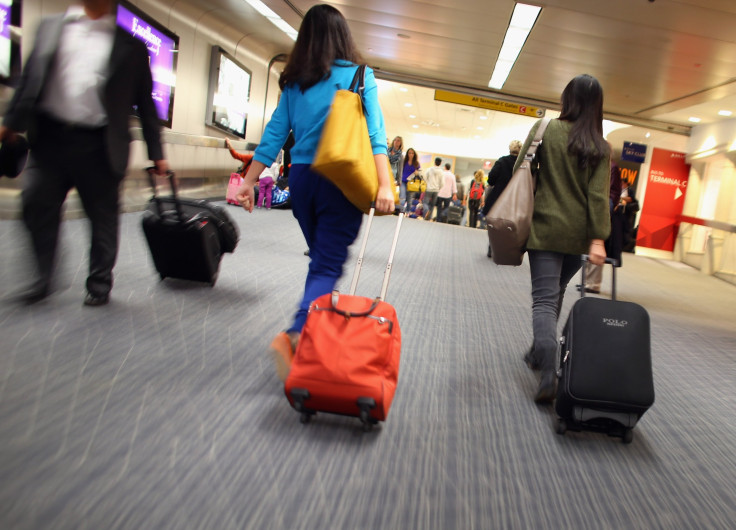Airlines Want To Shrink The Size Of Your Carry-On Bag

Most air travelers try to jam as much as they can into their carry-on bags to avoid the ubiquitous checked baggage fees that seem to grow daily. But if the airline industry has its way, you might have no choice but to pay up, because the allowed size of your carry-on luggage might be too small to hold much of anything.
The International Air Transport Association (IATA), a trade group for the global airline industry, proposed a new standard size for carry-on bags this week: 21.5 inches tall by 13.5 inches wide by 7.5 inches deep. That's about 21 percent smaller than the current size restriction of 22 inches tall by 14 inches wide by 9 inches deep that is standard on major U.S. airlines like Delta, American and United.
With that size, IATA said in a statement, "theoretically, everyone should have a chance to store their carry-on bags on board aircraft of 120 seats or larger." The proposed sizing is non-binding and it's up to each airline whether to adopt it or stick with their own rules. But IATA urges conformity, so that a bag that is accepted on one airline isn't turned away by another on the same trip.
Several airlines, including Emirates, Lufthansa, Cathay Pacific and Qatar, have already decided to institute the new size rules, and IATA expects more to follow suit. American Airlines has said that it has no plans to change its baggage size restrictions, and United and Delta have yet to weigh in.
Of course, consumers aren't happy about IATA's proposal. If more airlines adopt the suggested size limits, many travelers would be forced to buy new luggage that's compliant with the rules -- and would likely spend more money on checked baggage fees, which usually cost $25 per suitcase each way.
Many American carriers have been cracking down on current size restrictions already, turning away passengers whose bags don't comply with the current sizing. But passengers have complained that the restrictions are arbitrary and inconsistently enforced.
@Delta Bumped of DL1982 allegedly carry one was too big. Next day same bag no problems flew DL2151. Hotel cost me? pic.twitter.com/5d57sjXpuu
— Carlos Cruz (@crcpmp) November 4, 2014Others were surprised to learn last year that some airlines did change their size restrictions -- and were serious about enforcing them.
Been traveling on United Airlines with the same carryon for 2 yrs now...all of a sudden it's too big... #pissedofftohighheaven
— Garnerstyle (@GarnerStyle) August 6, 2014Airfarewatchdog.com's travel expert George Hobica noted at the time that airlines were becoming more stringent about checking bag size as planes became more and more full.
According to the Associated Press, airlines have said they're working with luggage companies like Samsonite to potentially develop new travel bags with labels indicating "Cabin OK" to show that they would comply with the newly proposed restrictions. One consumer travel advocate, Charlie Leocha, told the AP that the move seemed baffling to him. "Are the airlines are cahoots with the baggage manufactures," he asked. "It just seems crazy."
© Copyright IBTimes 2024. All rights reserved.











